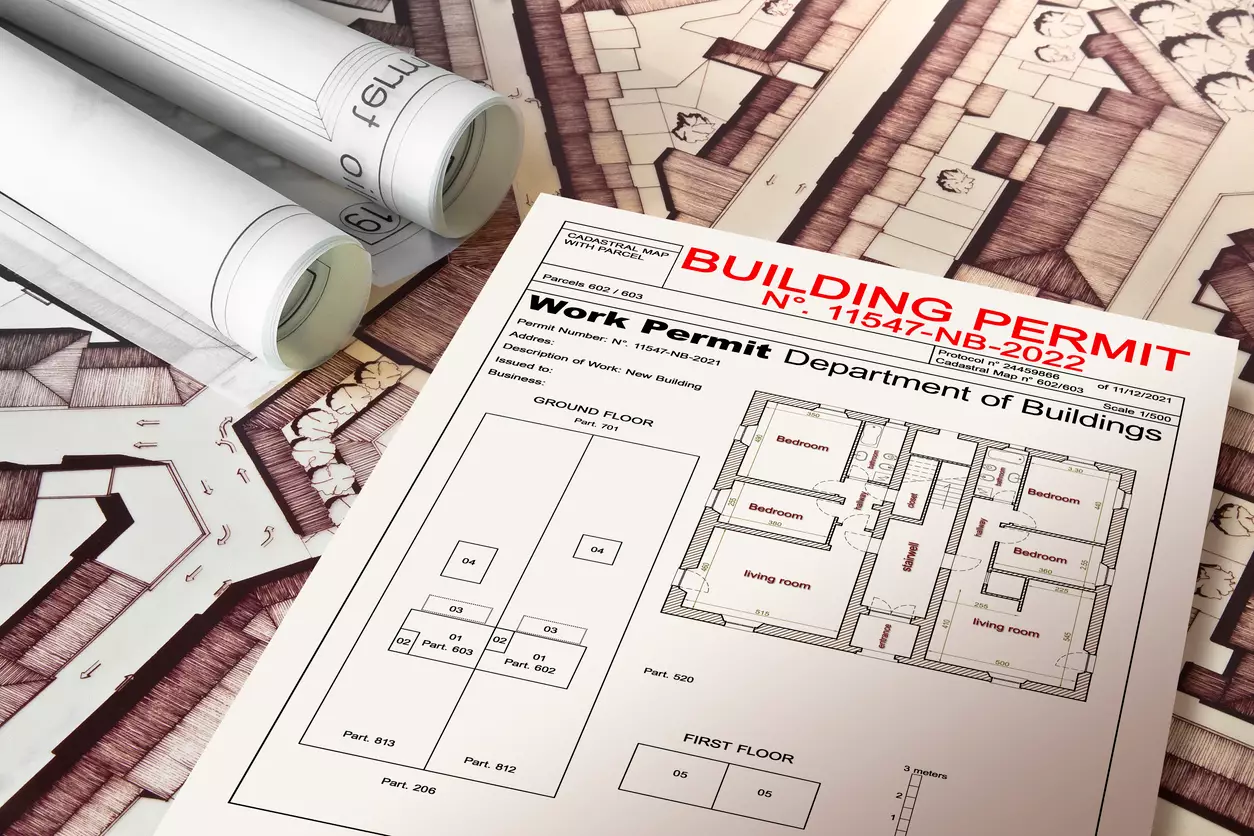How to Buy a Foreclosed Home

Table of Contents
- How to Buy a Foreclosed Home
- What Does Foreclosure Mean?
- How to Buy a Foreclosed Home: A Complete Guide
- Step 1: Understand the Types of Foreclosure Purchases
- Step 2: Hire a Real Estate Agent for Foreclosure Deals
- Step 3: How to Find Foreclosures for Sale
- Step 4: Get Preapproved for a Mortgage Before You Buy
- Step 5: Making an Offer on a Foreclosed Home
- Step 6: Importance of Appraisal and Inspection for Foreclosures
- Step 7: Finalizing the Purchase of Your Foreclosed Home
- Drawbacks of Buying a Foreclosed Home
- Considerations Before Buying a Foreclosed Home
- Weighing the Pros and Cons of Buying a Foreclosed Home
This guide offers a comprehensive overview of the process involved in purchasing a foreclosed home. From understanding foreclosure types and finding listings to making an offer, securing financing, and closing the deal, readers will gain valuable insights into navigating the foreclosure market.
It also highlights the importance of working with a real estate agent, conducting thorough inspections, and weighing the pros and cons. Whether you’re a first-time homebuyer or an investor, this guide will help you make informed decisions when buying a foreclosed property.
What Does Foreclosure Mean?
Foreclosure is a legal action that banks and non-traditional lenders can trigger when a homeowner is unable to make their mortgage payments on time. This process allows the lender to seize the property to recover the debt effectively. If you see a home on a listing website labeled as "foreclosed," the lender has possession of it and is tasked with selling the property.
When someone uses a loan to purchase a home, a lien is placed on the property. This lien remains in place until the mortgage is fully repaid. If the owner stops making their payments on time, the lender can repossess the property.
The lien allows lenders to mitigate some of the risk associated with providing a borrower with a significant sum of money. Homeowners are usually given a short period to repay the outstanding payments, after which the bank can sell the property.
How to Buy a Foreclosed Home: A Complete Guide
Buying a foreclosed home is a popular strategy among real estate investors. If you decide to invest in foreclosed homes, you may be able to find properties at prices that are lower than current market values. Before you take part in this process, you should understand what it entails and the many benefits and risks associated with the strategy.
Step 1: Understand the Types of Foreclosure Purchases
There are two methods you can use to buy a foreclosure, which include an auction or from a lender if the property didn't sell at auction. You may also be able to find homes that the lender is about to foreclose on, which means that you can purchase them directly from the existing homeowners.
If you buy a home at auction, you must agree to purchase the property without receiving an inspection or appraisal. These properties are sold in "as-is" condition, which means that significant repairs may be required. The main advantage of buying at auction is that the process is much faster than the traditional method. Homes are usually sold well below market value.
When you take part in an auction, you may need to pay in cash. While some auctions accept financing, you must have an initial approval ready when you bid for a property. While you can purchase a foreclosed home on your own, it's a good idea to request assistance from an experienced real estate attorney who understands the foreclosure auction process.
If a property doesn't sell at auction, you can buy it from the lender. However, you may only be able to view a lender's inventory if you're working with a real estate agent who can give you access. While these properties are sold as-is, you should be able to obtain an inspection.
You can also buy a home before it goes to auction. During the initial stages of the foreclosure process, you can negotiate with the homeowner. They may be willing to accept a lower price to avoid the credit problems that come with foreclosure.
The multiple listing service labels homes that are in preforeclosure. However, due diligence is necessary to determine why a home is being foreclosed on. If you're wondering, "What is the cheapest way to buy a foreclosed home?" It's usually just before or just after it goes to auction.
Step 2: Hire a Real Estate Agent for Foreclosure Deals
No matter which foreclosure buying method you opt for, it's highly recommended that you hire a real estate agent who can help you navigate the process. Many lenders provide real estate-owned (REO) agents with foreclosed properties. The REO agent will then partner with a traditional one to find a buyer who's willing to make an offer. When searching for a qualified real estate agent, make sure they've worked with REO agents in the past.
Step 3: How to Find Foreclosures for Sale
Along with asking your real estate agent for help, there are many resources available to you when you're searching for foreclosures. For example, Fannie Mae HomePath allows buyers to search for listings that come with the foreclosure label. You can find these properties with an MLS number, address, or zip code.
You can also identify foreclosure listings with the Freddie Mac HomeSteps resource, which is functionally the same as HomePath. Foreclosed homes are also listed on the Department of Housing and Urban Development (HUD) website.
Step 4: Get Preapproved for a Mortgage Before You Buy
If you buy a home directly from the lender or purchase it before it goes to auction, you'll likely need to obtain a mortgage to cover most of the costs. After hiring a real estate agent, get preapproval for a loan. This is a preliminary approval that shows homeowners and lenders you're able to borrow enough money to buy a property. It also allows you to identify how much you can afford.
Step 5: Making an Offer on a Foreclosed Home
Once you find a foreclosed home that you'd like to add to your portfolio, your agent can provide the lender or government agency with your offer letter. If you want to buy a home before it enters foreclosure, send the offer letter to the homeowner.
This letter includes pertinent information about the transaction, such as your address, your name, and the price you wish to pay for the property. It should also list the earnest money deposit that you're comfortable with paying. In most cases, an earnest money deposit is around 1%-3% of the property's purchase price. Once the deal is approved, this money will be used to cover some of your closing costs and down payment.
Step 6: Importance of Appraisal and Inspection for Foreclosures
When you buy a foreclosure, you must obtain an inspection and appraisal. The appraisal allows you to identify the property's current market value. The purpose of the appraisal is to make sure that your lender doesn't give you too much money. It also ensures that you don't pay too much for the property.
Inspections are performed by professional inspectors who assess the exterior and interior of a home. They'll tour your home and make note of any issues that require attention. For example, the inspector might find mold in the basement. Since foreclosures are sold as-is, you must know how many repairs are needed before you buy one.
Step 7: Finalizing the Purchase of Your Foreclosed Home
To determine if you can afford the home and the potential repairs, thoroughly review the appraisal and inspection reports. If you're ready to purchase the property, call your lender to have the loan finalized. Your agent will help you prepare for the closing.
Drawbacks of Buying a Foreclosed Home
While there are many reasons why you should consider investing in foreclosed homes, this strategy comes with a few risks. For example, foreclosed homes often require maintenance and repairs. If you don't receive a comprehensive inspection, you may be unaware of the potential repair costs.

You may also face competition from other buyers. Purchasing foreclosed properties is highly appealing to investors, so you need to be proactive during your search to avoid missing out on good deals.
There's also a risk of buying a property with unexpected liens or title issues. These issues must be cleared to receive the title and deed to the home, which can cost thousands of dollars and take considerable time.
Considerations Before Buying a Foreclosed Home
Before you buy a foreclosed home, there are some key considerations you should think about, such as your budget, the property condition, the length of the homebuying process, and potential legal issues. Create a detailed budget to ensure you understand how much you can afford. You can learn about the condition of the property by scheduling an inspection before you purchase the home.
While the length of the buying process is often shorter than it is when purchasing a home on the market, it can take longer if you run into problems. For example, legal issues might arise if someone else claims that they own the property. These problems can delay the closing by a considerable amount of time. If you wish to buy a foreclosure, do ample research beforehand to assess your readiness and find the right property to invest in.
Weighing the Pros and Cons of Buying a Foreclosed Home
Buying a foreclosed home allows you to add investments to your portfolio at a lower purchase price than you would typically have access to. Foreclosed homes are almost always below market value since lenders want to offload them. If you don't purchase the property at an auction, you can apply for a loan to help cover the costs.
There are, however, a few disadvantages to consider. Foreclosed homes are often in disrepair. You may need to perform expensive repairs to make the home livable. Whether you're a first-time buyer or a seasoned investor, consider this strategy if you understand the risks and want to purchase real estate at a lower cost.
Search Property & Deed Records
Table of Contents
- How to Buy a Foreclosed Home
- What Does Foreclosure Mean?
- How to Buy a Foreclosed Home: A Complete Guide
- Step 1: Understand the Types of Foreclosure Purchases
- Step 2: Hire a Real Estate Agent for Foreclosure Deals
- Step 3: How to Find Foreclosures for Sale
- Step 4: Get Preapproved for a Mortgage Before You Buy
- Step 5: Making an Offer on a Foreclosed Home
- Step 6: Importance of Appraisal and Inspection for Foreclosures
- Step 7: Finalizing the Purchase of Your Foreclosed Home
- Drawbacks of Buying a Foreclosed Home
- Considerations Before Buying a Foreclosed Home
- Weighing the Pros and Cons of Buying a Foreclosed Home
Related Articles
Recent Articles
-
![]() Best Real Estate Markets to Invest in 2025 for Maximum Returns
Best Real Estate Markets to Invest in 2025 for Maximum Returns
-
![]() What Is Appraised Value and What Does a Property Appraiser Do?
What Is Appraised Value and What Does a Property Appraiser Do?
-
![]() What Is a Property Deed Transfer and How Does It Work
What Is a Property Deed Transfer and How Does It Work
-
![]() Everything You Need to Know About Building Permits in Florida
Everything You Need to Know About Building Permits in Florida
-
![]() Everything You Need to Know About Commercial Property Insurance
Everything You Need to Know About Commercial Property Insurance










